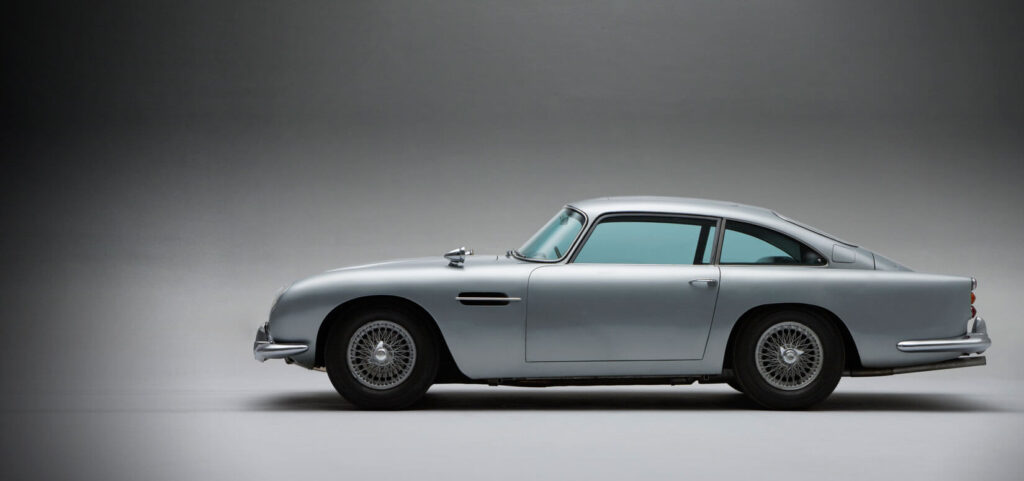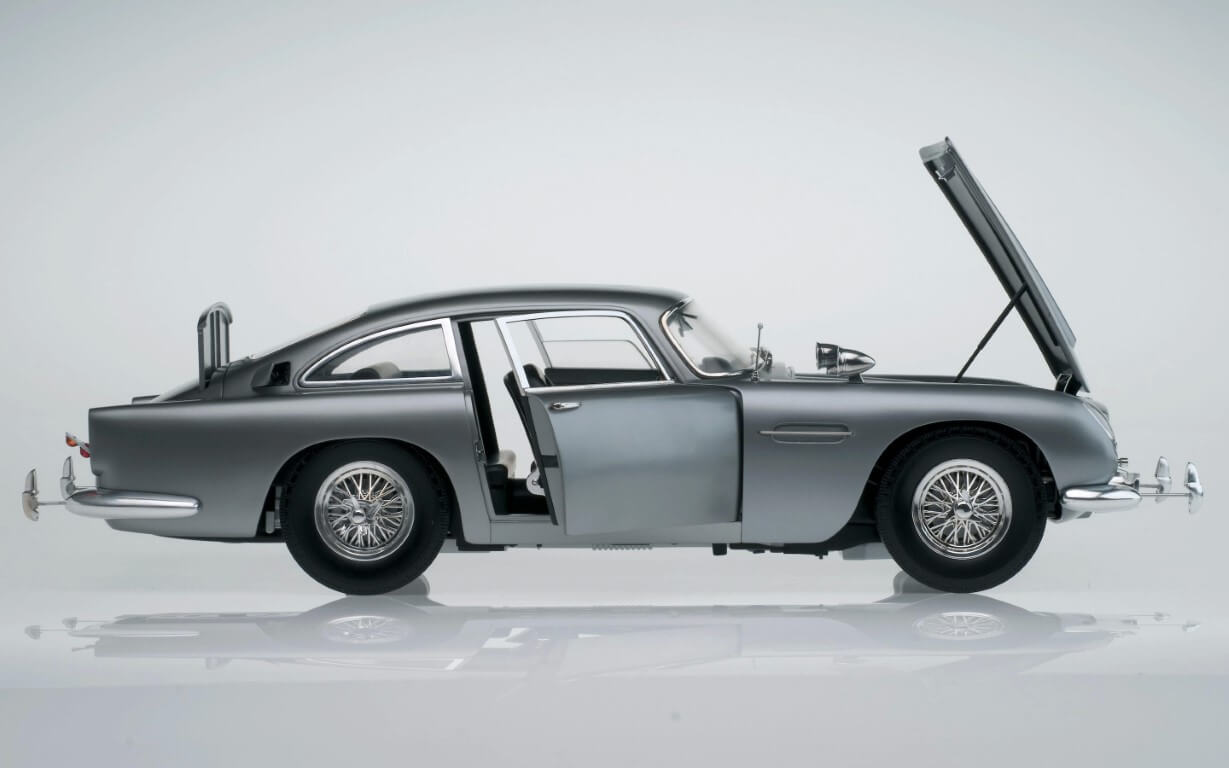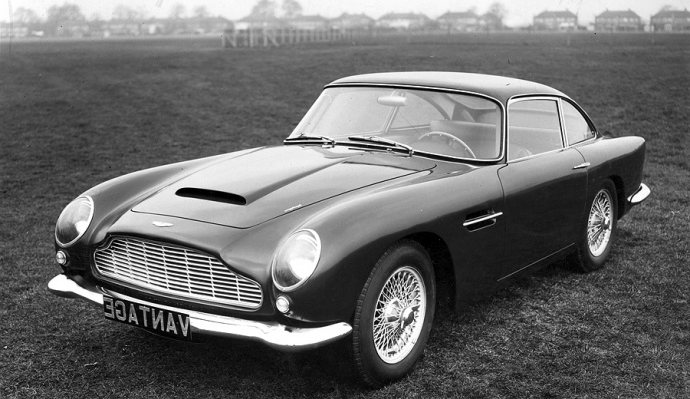James Bond Eat Your Heart Out
Editor’s Note: Here’s another vintage sports car that’s being auctioned off on January 18, 2013 at RM Auctions’ Arizona event. We love these 007 machines and believe that you all probably do as well. Enjoy!
Photo Credit: Mike Kippen ©2012 Courtesy of RM Auctions
Estimate:
$375,000-$450,000 US
282 hp, 3,995 cc DOHC six-cylinder engine with three SU carburetors, five-speed manual transmission with overdrive, independent front suspension by double wishbone and coil springs, rear live axle with trailing arms and coil springs, and four-wheel hydraulic disc brakes. Wheelbase: 98 in.
• California car since the 1960s; in present ownership since 1987
• Fully documented and presented in original Caribbean Pearl Blue with red leather
• 50,460 indicated miles, believed to be original
The DB5 is the essential 1960s Aston Martin, with the Silver Birch BMT 216A forever associated with super-spy James Bond. The DB5 starred in six Bond films, beginning with Sean Connery in 1964’s Goldfinger, all the way to Daniel Craig in 2012’s Skyfall.
The DB5 is so indelibly associated with Bond that the car used in Skyfall is part of the final action sequence in Scotland’s remote Glencoe. The area was deliberately chosen so that the grand sports car wouldn’t be placed in a modern setting. The DB5 used in the sequence is from Albert R. Broccoli’s Eon Productions and is supposed to be the same car used in Goldfinger, carrying the original BMT 216A license plate.

Before the movie, stunt director Gary Powell accompanied Daniel Craig in BMT 216A to get him some seat time, as he hadn’t driven a DB5 since Casino Royale. Powell reported other drivers doing double-takes as they recognized first the car, and then looked to see who was behind the wheel.
The DB5 was an ideal vehicle for a British super spy. It was expensive, with limited production, and its performance is still competitive today. The four-liter, twin-cam aluminum six-cylinder engine produced 325 horsepower in Vantage form and could manage 0-60 in 6.1 seconds, with a top speed of 155 mph.
The major technical jump occurred in 1958, with the introduction of the DB4, whose exceptionally clean Touring design moved away from the rounded DB2. Construction was by Superleggera, with aluminum panels over a tubular skeleton, resting on a rigid platform frame. Aston Martin’s Harold Beach started work on the platform in 1954, fabricators Farsley built it, and the tubular understructure was welded on at Aston Martin’s Newport Pagnell works. Finally, the aluminum body panels were attached, and Polish engineer Tadek Marek’s new, aluminum 3.7-liter DOHC six-cylinder engine completed the picture.

The DB5 was launched in 1963, but its genesis was really David Brown’s revival of the Lagonda name in 1961, in the shape of the Rapide Sedan. The extra weight was offset by boring out the DOHC engine to 3,995 cubic centimeters, which resulted in the engine cranking out 282 horsepower. The DB5 could be ordered with a four-speed and overdrive, a three-speed automatic transmission, or later, with a five-speed manual transmission.
The car on offer today is a right-hand drive 1964 DB5 saloon that is finished in its original color combination of Caribbean Pearl Blue metallic with a red, leather interior. This DB5 was sold new by Brooklands, of Bond Street, on April 7th, 1964, in the county of Somerset, and it was registered as 478 YYC, which are the plates that still accompany the car. The initial cost of a DB5 was £4,249, in 1964, equivalent to that of 8½ Minis, and enough money to purchase an imposing country house on the outskirts of London!

As a later 1964 build, it was fitted with a five-speed transmission rather than the early four-speed, or four-speed with overdrive transmission, and rode on knock-off wire wheels. The car only spent four or five years in England before it was shipped to California’s much more desirable climate. It remained there for 20 years, gaining an 8-track tape player, which it still retains. It, along with the car, have been sparingly used since.
The present owner fell in love with the color in 1987, bought DB5/1499/R, and shipped it home to Seattle. There he began an ambitious three-year restoration, in which the car was restored from the ground up. The work was fully documented and photographed, and the total, in 1991, came to almost $60,000.

The bodywork and paint were restored by Premier Autobody, which stripped and disassembled the car, replaced both door sills and rear fender lips, and the aluminum panel below the trunk lid. The bumpers and trim were re-chromed, the windshield and all rubber seals were replaced, and the car was repainted in its original Caribbean Pearl Blue.
Mechanical work was handled by Complete Automotive, using parts from Aston Martin Services, of Needles, California. The car was fitted with new brakes, wire wheels, and new suspension parts, including upper and lower ball joints, roll bars, shock absorbers, and all linkages and boots. New electric heater motors were fitted, the same with one window motor. All seals and hoses were renewed, and four new Avon tires were fitted.
Rich’s Custom Upholstery was responsible for the interior of the DB5, reupholstering the front seats with Connolly hides and dying the unworn rear seat to match. New carpeting was fitted, along with a new headliner, new dash surfaces, and other leather trim. Since its restoration, this superb DB5 has been kept in a heated garage in the San Juan Islands, in Washington State, and enjoyed on weekends. Protected by a rain shadow created by the Olympic Mountains, the islands enjoy a mild climate. Orcas Island, which is the largest, has only about 20 miles of roads, which has contributed to the extraordinarily low mileage of just over 50,000 indicated miles. The new owner of this little used and fastidiously maintained Aston Martin will have a chance to see what all the fuss was about when the DB5 burst onto the big screen in Goldfinger in 1965.








